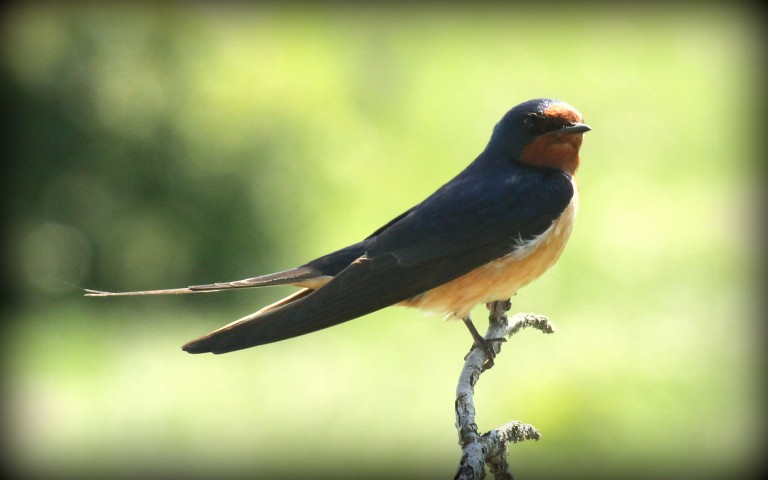Executive Director, Mark Bisset, recalls his experiences with barn swallows.
When I was a kid swallows used to warn us of a big change in the weather.
According to the lore, high-flying swallows meant nice weather, but when they settled down low, a storm was on its way. They would crowd onto power lines in long rows that seemed likely to part the wire with their collective weight.
There were so many.
It was their numbers that held my attention, along with their mysterious understanding of the weather. There was something ominous about these gatherings that will always be linked in my mind with the threat of towering black thunder clouds. They were also so obviously social. These normally acrobatic fliers sat quietly, comically, shoulder-to-shoulder like spectators at a sporting event, waiting for the opening play.
I felt their presence the way children sometimes do — in deep inside ways that stick to some part of you forever.
Just a bit east of the Washago area, the Couchiching Conservancy installed a bird blind at one of the properties we manage. It was built for the viewing pleasure of birders, who can sit inside and watch or take photos of their subjects. Phoebes seem to like the place too, and when we visited recently, a phoebe had also built her nest inside the blind. She waited impatiently with the swallows while we were there, holding a bright green caterpillar in her beak for her chicks and bobbing her tail like a nervous twitch.
But it’s the barn swallows, nesting in the rafters and zipping in and out of the open windows like the finest flying aces that really steal the show. These swallows are of particular interest now, because they are disappearing.
Fast.
They’re part of a large suite called aerial insectivores — bird that eat insects on the fly. Their numbers are plummeting and scientists aren’t exactly sure why. It’s likely a combination of lost habitat, climate change, insecticide use and other factors. Barn swallows were recently added to the list of endangered species.
Every fledgling that successfully flies from a nest is a victory now. So watching these joyous fliers up close was lovely. A privilege.
Less than 24 hours after that visit, I got a call from a friend who had been there with me the previous day. He had been back out that morning for another look at the birds near the blind. The nests are all gone, he told me. Torn down. Completely destroyed, not the way a predator looking for food would destroy them; more like the kind of destruction wrought by people paying attention to detail.
Outraged and incredulous that someone would do something so wantonly destructive, I checked with naturalist Ron Reid. Would a predator so completely wreck nests like this? He went out to take a look. His conclusion was that it probably was a predator; most likely a racoon. All the eggs and chicks had been carried off, while nothing aside from the nests had been disrupted in the blind. He concluded a visitor had likely left the door open, allowing an animal into the structure.
At first I was relieved. At least there was no malice in the act. Then something else crept in: I had been at the blind the afternoon before the incident.
Had I closed the door?
The fragility of these collapsing bird populations came thundering home to me in a new way that left no room for righteous indignation. The odds are heaped so massively against them. We have such a colossal impact on our environment that even a momentary lapse can lead to disaster.
And there are so many of us.
Whether it was a racoon or a bear or me or some other absent-minded birder, the results are the same. The nests are gone.
The next day the barn swallows were back, already rebuilding their nests. I take the lesson to heart. There’s nothing to be done but work harder. Rally other people to help. Create more nesting opportunities. Protect more habitat. Listen to the science. Generally give a damn.
Still portents of mystery, swallows are now signalling another kind of gathering storm.
The wires are empty.
Written by Mark Bisset, Executive Director.

